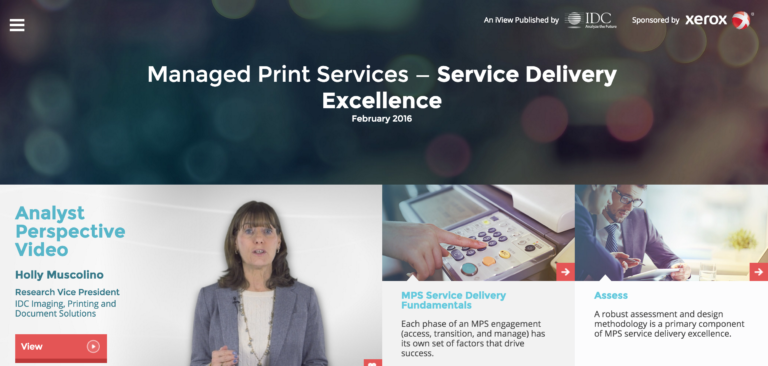The quality of your Managed Print Services engagement depends a great deal on the provider’s MPS infrastructure. How does the vendor deliver your services behind the scenes? MPS infrastructure typically requires an integrated suite of tools for asset, supply and service delivery management. Expect it to include capabilities such as:
- Third-party service management and integration
- Help desk management system
- Option to integrate with client-based ticketing systems
- Supply scorecard, monitoring and management
- Transaction logging and auditing
Hosting Integration and Deployment
What about hosting for MPS data and tools? A good solution is often centrally hosted with a web-based user interface. Sometimes MPS infrastructure requires integration between client tools and the cloud for operational delivery of the services you contracted. This probably won’t be an out-of-the-box integration, at least not for a complex, global fleet engagement. If a provider tells you they can do out-of-the-box integration with your systems, be prepared to dig deeper.
- Does the provider integrate device, billing and incident status information with your systems?
- Can certain MPS tools integrate with your IT help desk?
- Does the provider extend the service infrastructure consistently and globally?
Security and Standards
IT and security management are understandably reluctant to open their doors to outside technologies and services. For maximum client comfort, MPS solutions should be based on the highest security measures and standards for fleet data collection and communications. Specifically, that means the tool set meets requirements like these:
- ISO 27001 certified management process
- Safe Harbor compliant
- U.S. Federal IS Management Act
- Sarbanes-Oxley compliant
Communications should be secure and encrypted, with controlled physical access such as biometric identification.
- How does the vendor apply and enforce printing policies, such as end-user controls, rules and parameters such as device authentication or when to allow color printing?
Portal Views of Your Device Fleet
Your provider manages the overall fleet, but you may also want visibility into what’s happening there.
A portal is a convenient way to view information by fleet, by device and by request. It provides a window into your fleet and the services provided to it. It’s a hub for information about assets, supplies, incident management, data collection and more. Service, supplies and utilization information help your provider optimize your fleet environment.
- Capabilities to expect in an MPS portal include:
- Visual rendering of fleet to eliminate guesswork about device locations
- Devices preconfigured to your printing policies
- Links to reporting systems and to some of your internal systems, such as finance and help desk
- Ability to submit an incident or supply order and monitor ticket progress
- Access to incident submissions, supplies orders, printer locations, driver installation and other services
- Access to manuals and other information for deployed devices
Good technology makes viewing easier for you and for your service provider, which in turn contributes to better service, lower costs and consistent uptime. That’s reason enough to understand how your service team accesses and manages your fleet.
- How does the provider give you an operational view of device fleets?
Reporting Drives Operation and Optimization
Reporting is a critical part of your MPS engagement. It’s the job of infrastructure tools to capture SLA data and generate reports about your networked devices. Captured operational data gets used in updates like these:
- Device uptime tracking
- Supplies consumption and management
- SLA reporting
- Meter and page count reporting
Operational service reporting should include both standardized and customized reports exportable as XLS, PDF, CSV and other formats. You can also use reports to share MPS results with your management team.
Even a basic understanding of MPS infrastructure will give you a better foundation for evaluating the capabilities of MPS providers. And after you select the right partner for your enterprise, you probably won’t have to think about the infrastructure much at all.
Learn what InfoTrends had to say about MPS Infrastructure in this 2015 report.



